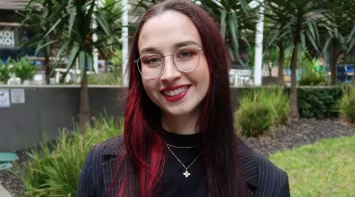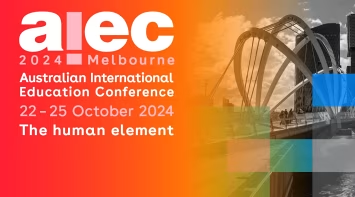The first week of February saw the IEAA National Symposium return for another year where the topic of diversification was front and centre. Over two days, esteemed guests from across the Australian and New Zealand international education sector gathered in Melbourne to share their thoughts on this topic, discussing the diversification of programs, source markets, and modality. In this article, we will explore the top five key takeaways we learnt from the IEAA National Symposium 2024.
1. This will be the “Africa Decade” - however, there are challenges with visa approval rates for African markets.
Africa’s potential as a competitive region in international education has been of growing interest recently. This is particularly true of its largest source markets in Egypt and Nigeria. However, according to Navitas data, compared with students from more popular source markets like China and Vietnam, prospective African students have significantly lower offshore visa grant rates, with Nigeria and Egypt having only 39% and 32% of visas granted between July 2022 and December 2023, respectively.
Guest speaker and University of Sydney Recruitment Coordinator (South Asia, Middle East, and Africa) Walter Ngwu, said there were many challenges impeding prospective African students from studying abroad, but that competitor destinations had still managed to address them in a variety of ways. These include creating a clearer and more defined visa policy (like the UK), offering more scholarships, and embracing diversification of modality by offering more TNE opportunities.
2. Alternative delivery modes are innovative and exciting, but also quite expensive and not financially viable for many institutions
Transnational Education (TNE) and online education have become increasingly lucrative in recent years as cost-of-living pressures continue dissuading more prospective students from studying abroad. However, little attention is paid to the financial impacts of alternative delivery modes and whether they are financially viable prospects for institutions. Guest speaker and Deakin University Pro Vice-Chancellor and Vice President (International), John Molony, said TNE in the Australian international education sector was originally “very entrepreneurial, and too fast, too loose”, but had since become stable. However, Mr Molony said challenges remained over “the inability of the market to pay for our cost of production” which, even in online delivery, had proved difficult.
Fellow guest speaker and Chief Commercial and Global Partnerships Officer at Acumen/Sannam S4, Marnie Watson agreed that her current research project helping to install Australian offshore delivery programs in several markets across the world had not yet resulted in revenue. Despite this, Mr Molony said more experimentation was still needed in this space.
3. Mongolia is showing increased interest in international education, particularly after hosting in-country education fairs
According to Acting Head of International Education at Austrade, Helen Kronberger, concerted efforts in Northeast Asia have resulted in Study Australia fairs being a calendar fixture, with the most recent fair in Mongolia in September 2023 having the highest number of student attendees on record. This enthusiasm for studying in Australia is supported by IQ Demand data which shows Australia has the equal highest share of demand for prospective Mongolian students as of January 2024, suggesting Mongolia’s potential to grow even further as a diversity source market.
4. The Australian economy benefits significantly from international students remaining in Australia post-study
When discussing the various opportunities and risks of diversification, Economic Policy Director at Grattan Institute, Brendan Coates, highlighted the economic benefits of international students who choose to remain in Australia after completing their studies.
“International students form the bedrock of the Permanent Skilled Migration Program. About one-third of all permanent, skilled, and family visas go to someone who first held a student visa,” said Mr Coates. According to Grattan Institute data, the fiscal benefits of students remaining in Australia as skilled migrants, who work and pay taxes, amounts to roughly $12 billion per year.

Conclusion
Diversification of source markets, programs, and modality will continue to be major talking points in 2024, particularly as our sector observes the effects of ongoing policy changes, such as the Australian Government’s latest Migration Strategy and the Canadian Government’s decision to cap study permit approvals over the next two years. Diversification is a pillar of the current Australian government International Education Strategy and is anticipated to remain a focus despite the proposed refresh of the Strategy due in 2024. In the meantime, please check out some of our recent articles and reports related to the topic of diversification.
Diversification: How Institutions Can Meet This Challenge in 2024
Understanding Kenya as a Source Market: Africa’s Rising Star
*Images courtesy of International Education Association of Australia (IEAA)
You might like...

International Students Open to New Opportunities Amid Global Policy Changes
Findings from IDP's Voice of the International Student Pulse Survey

Day in the Life of IDP Education's CEO
IDP Education CEO and Managing Director, Tennealle O'Shannessy gives us a closer look at her leading role

Day in the Life of the People Experience Coordinator
Stephanie Kinstler provides some insight on the demands and rewards of being the People Experience Coordinator

